
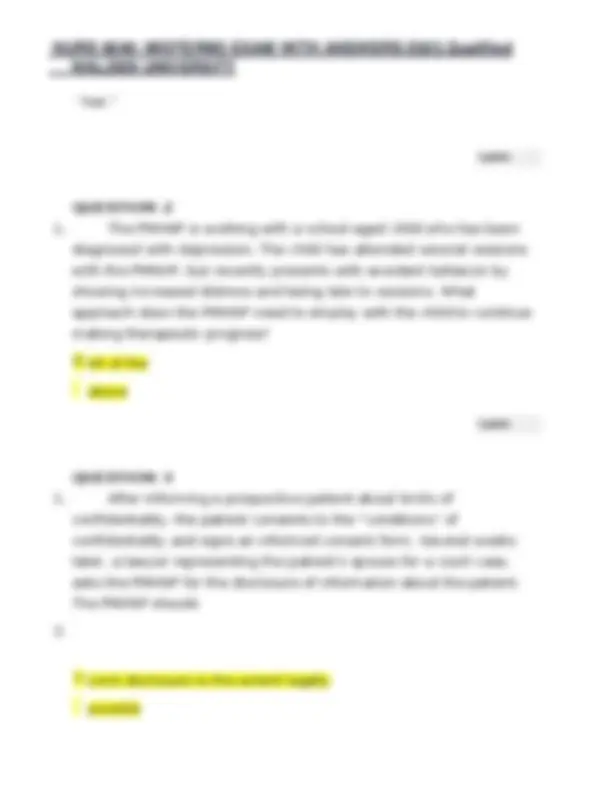
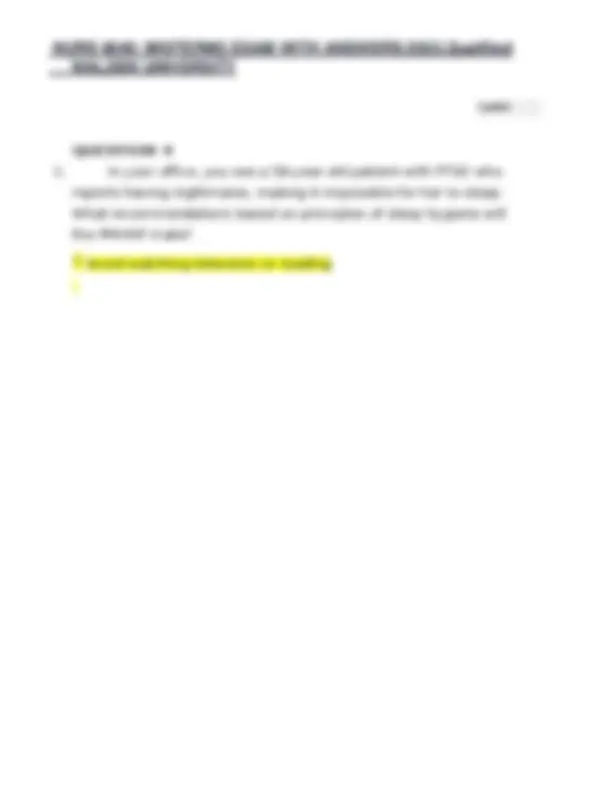
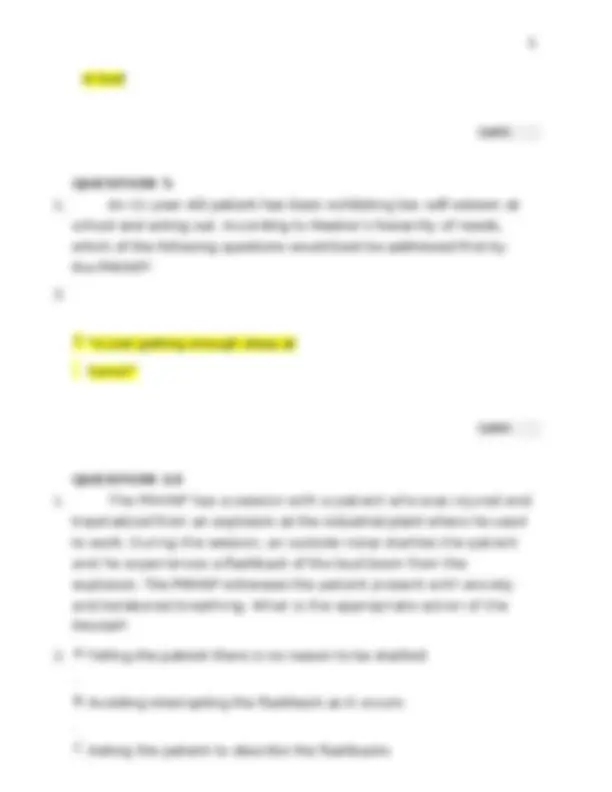
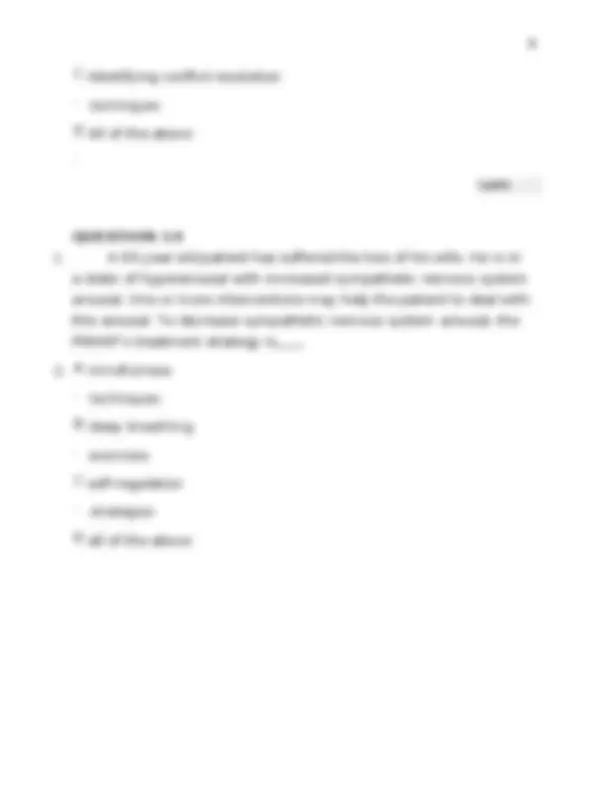
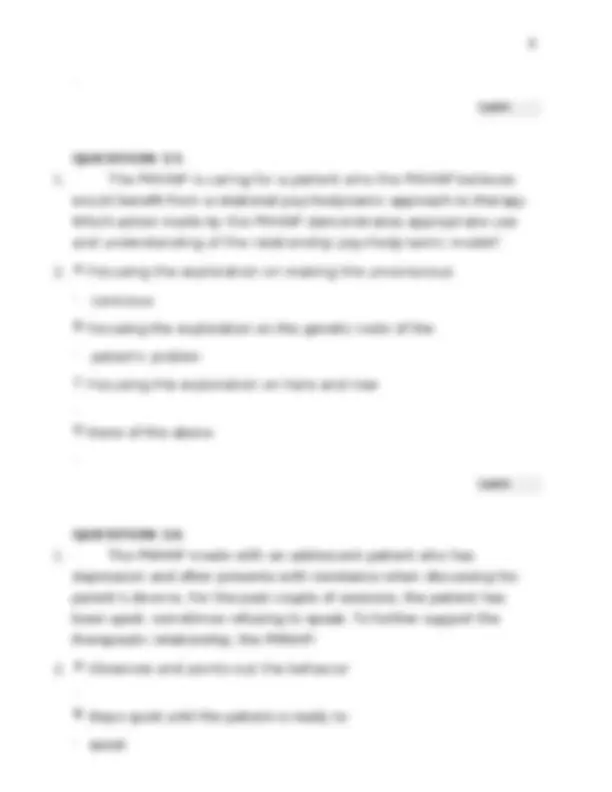
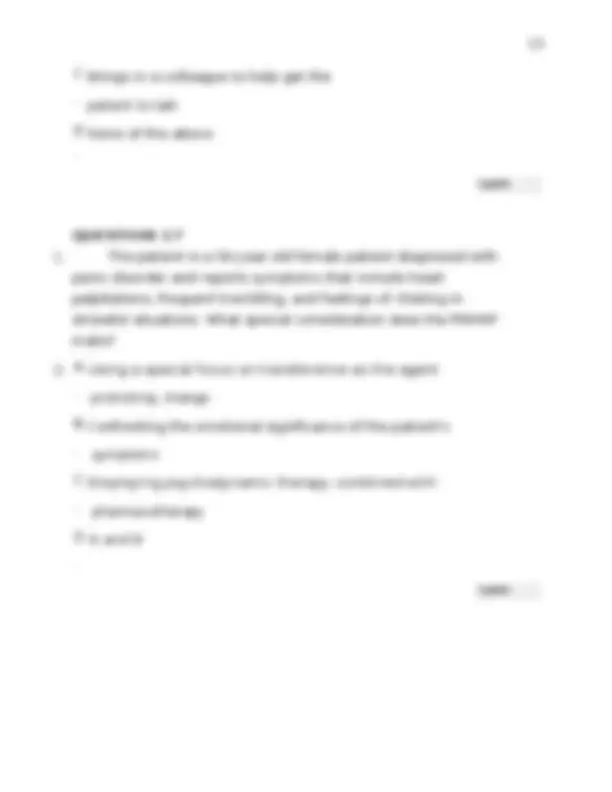
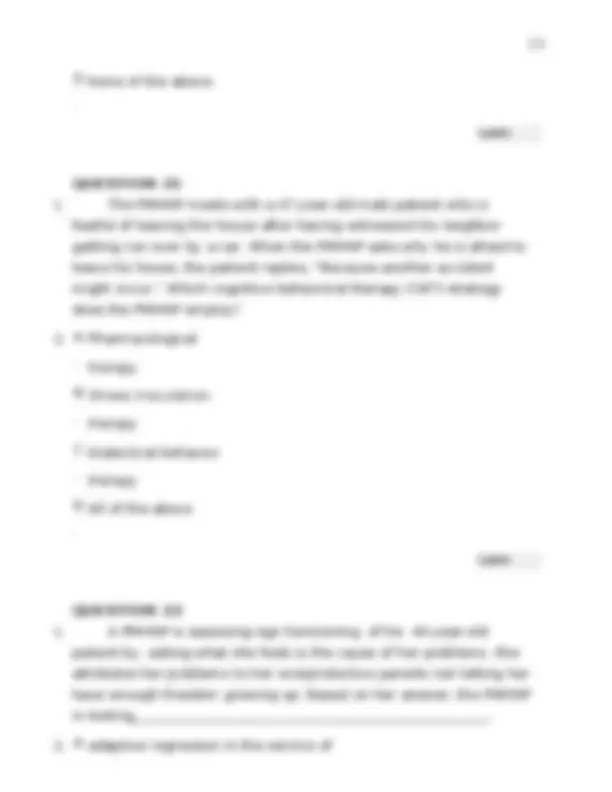
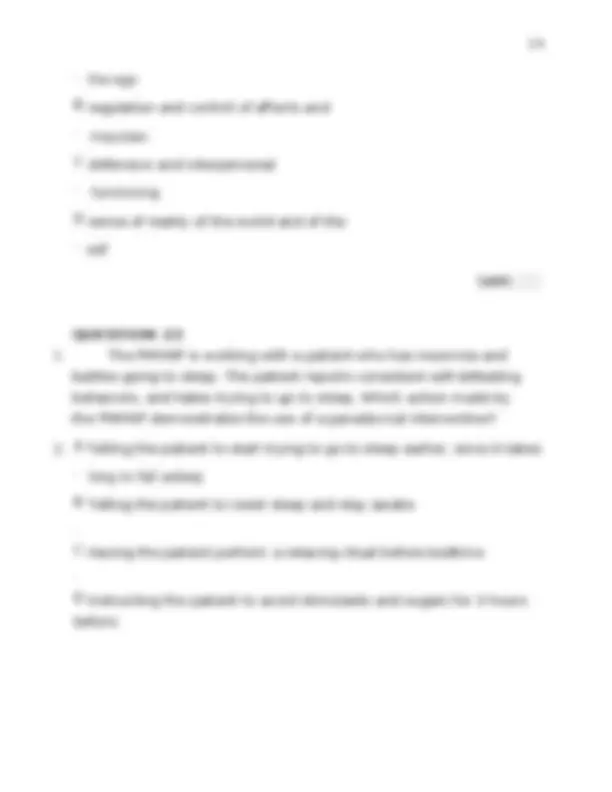
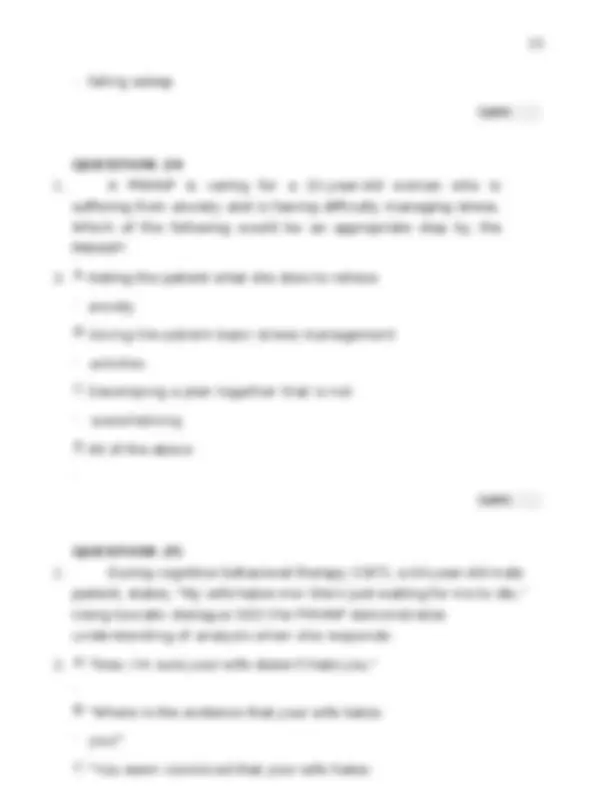
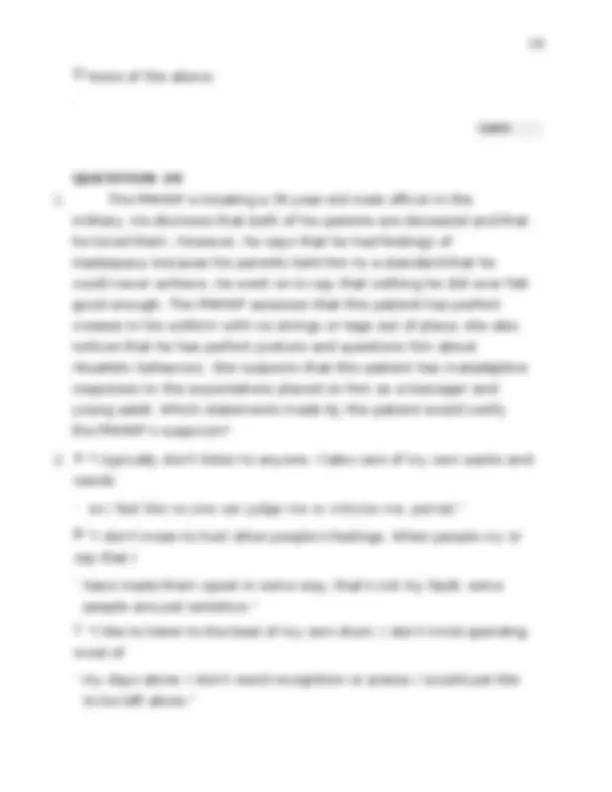
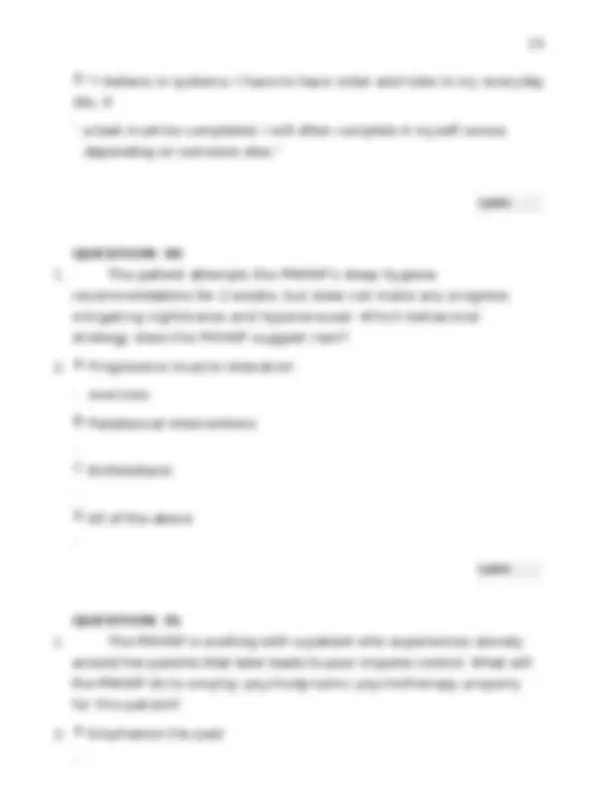
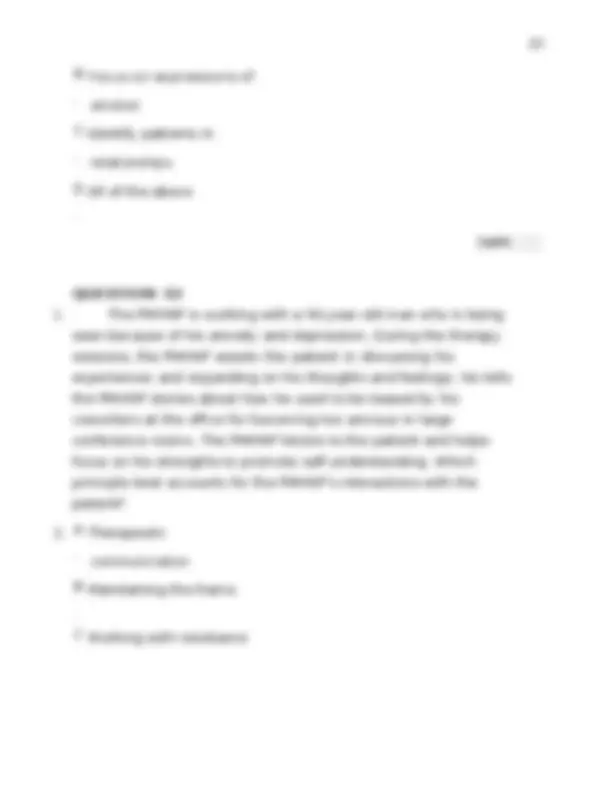
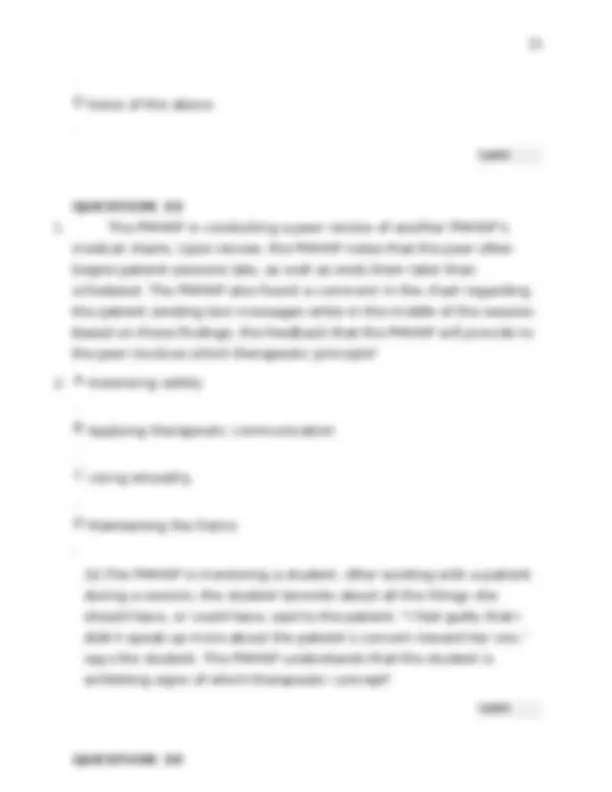
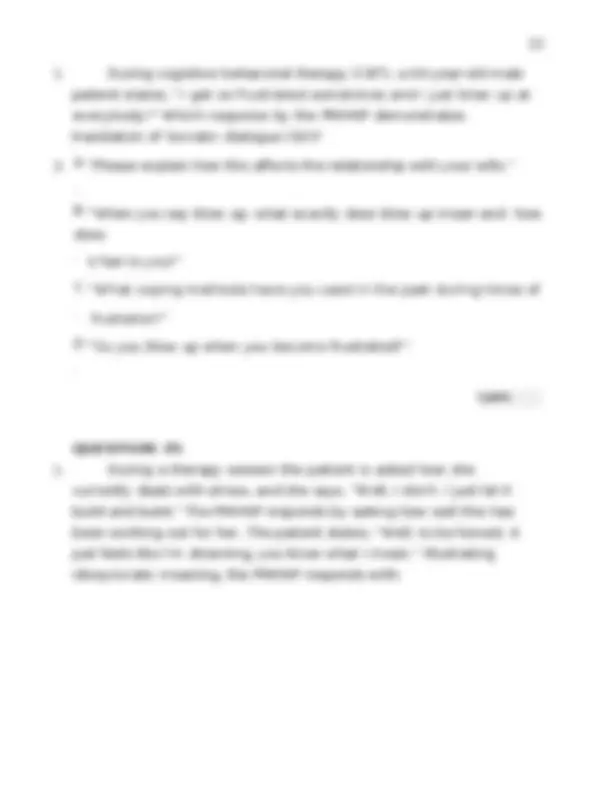
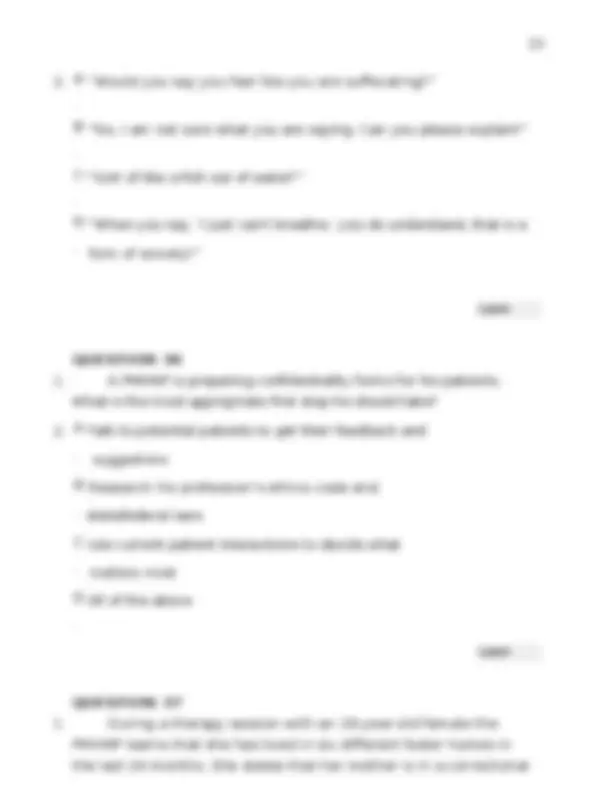
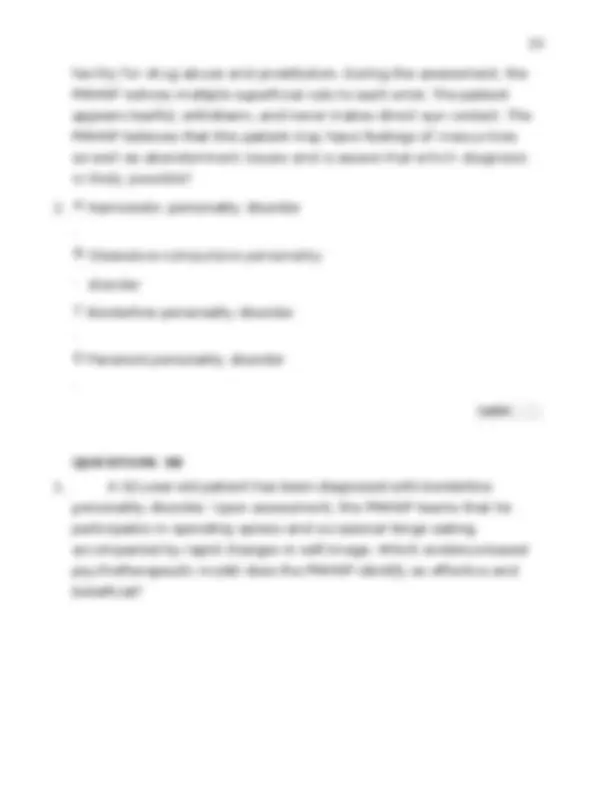
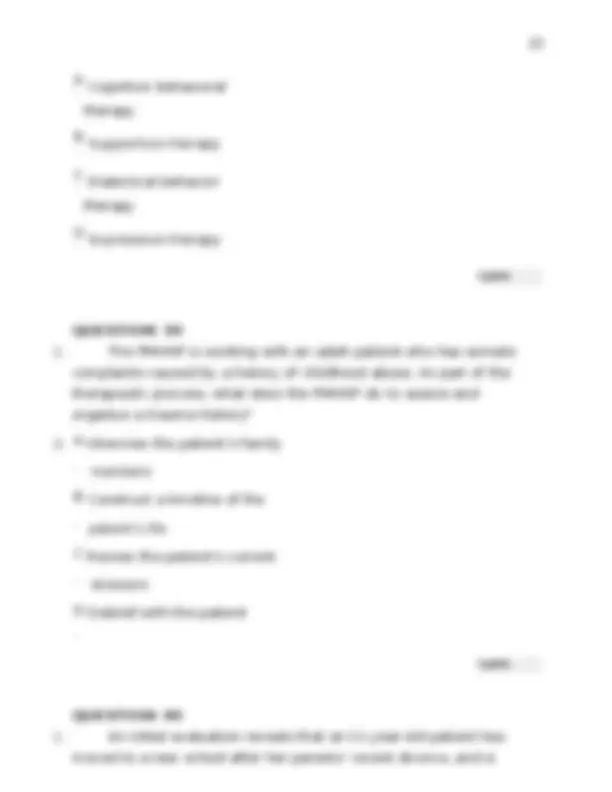
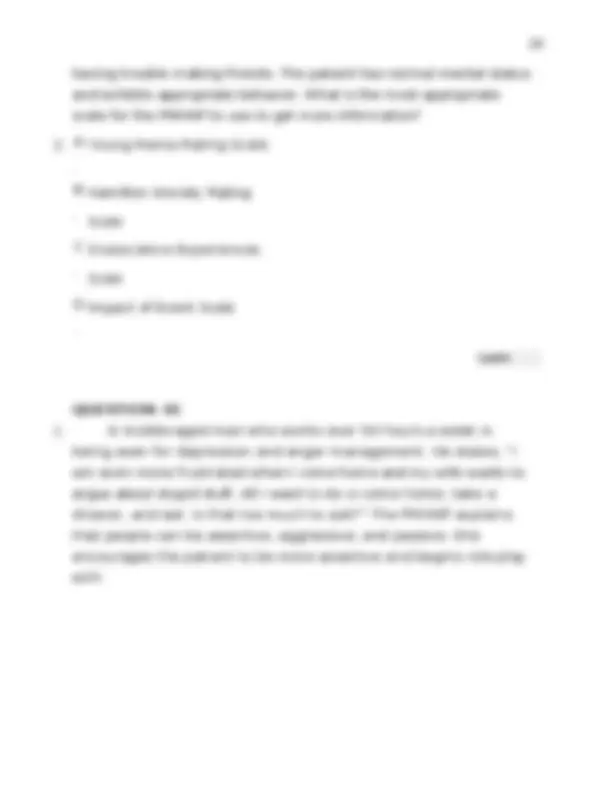
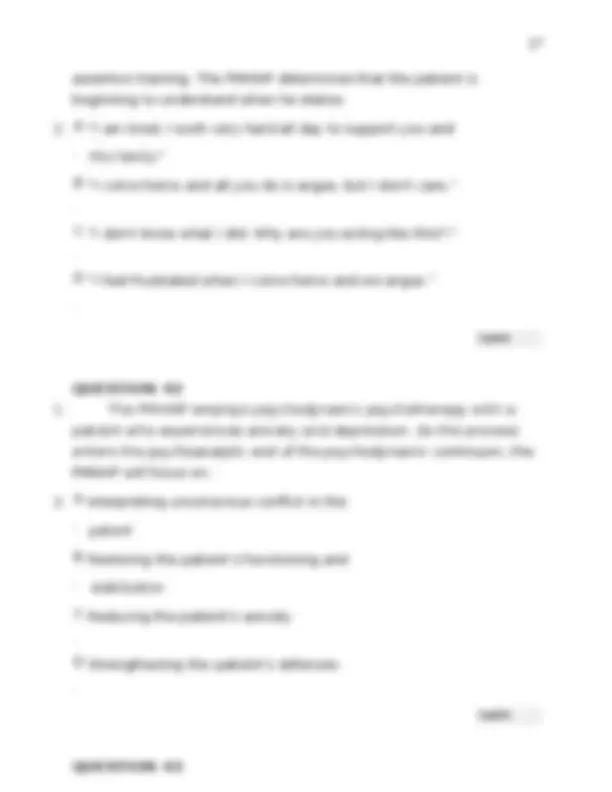
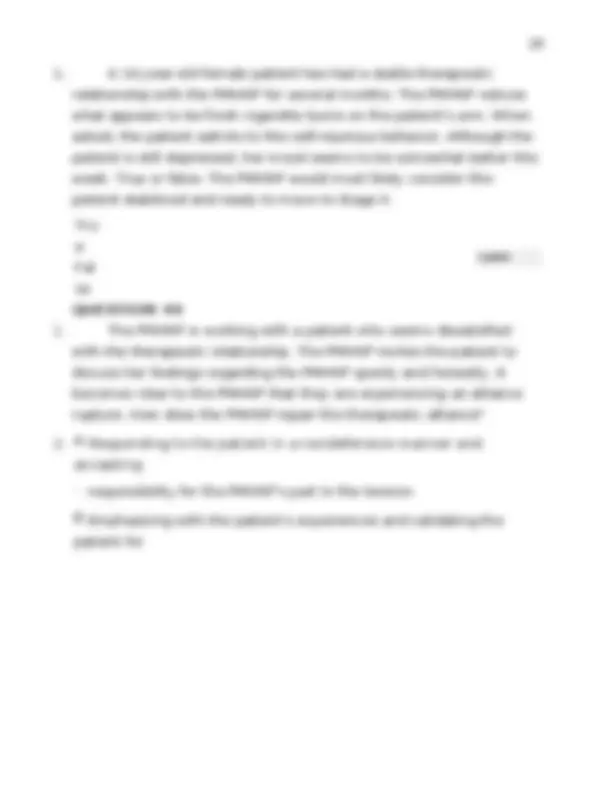
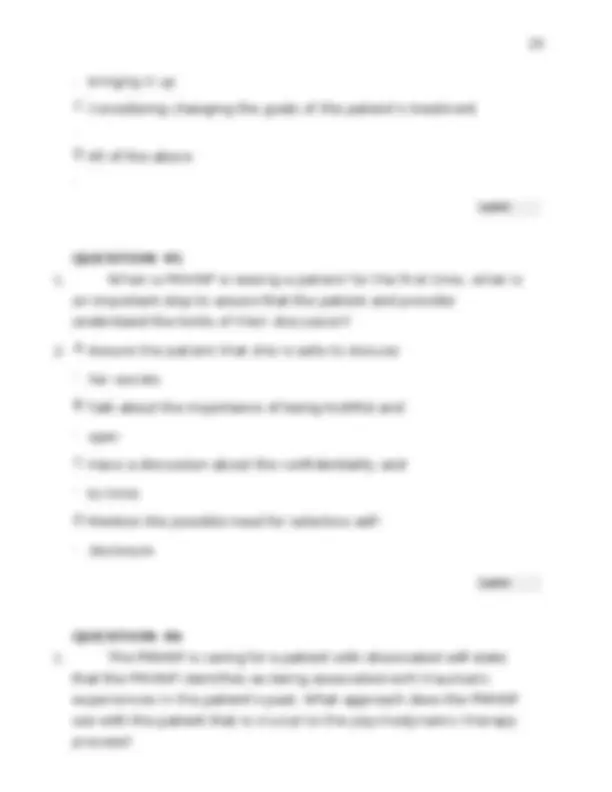
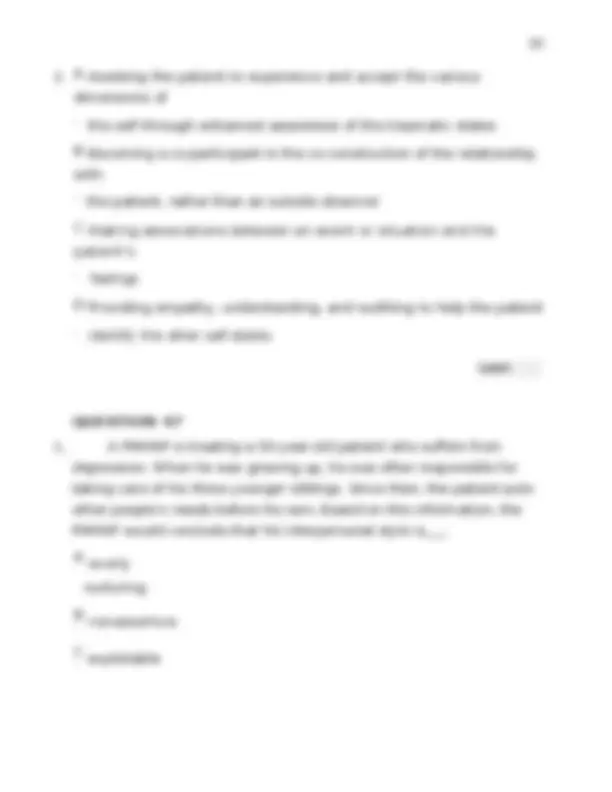
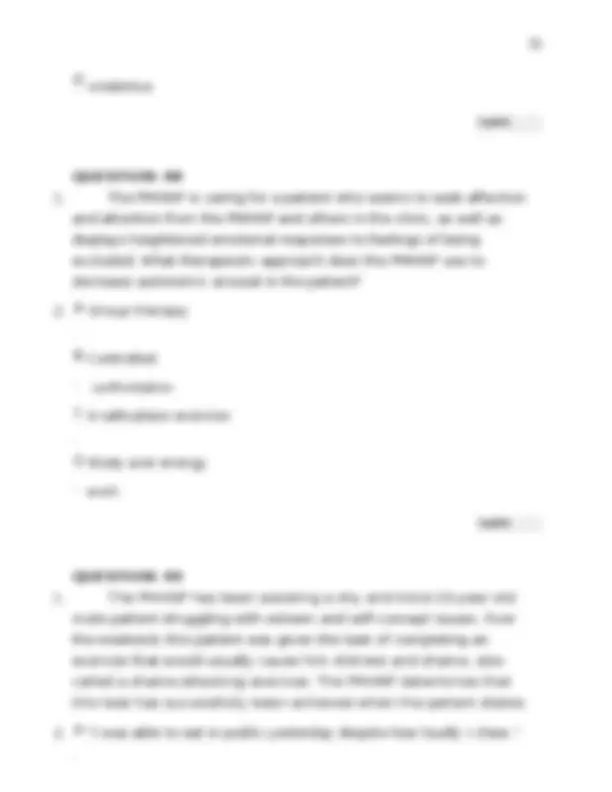

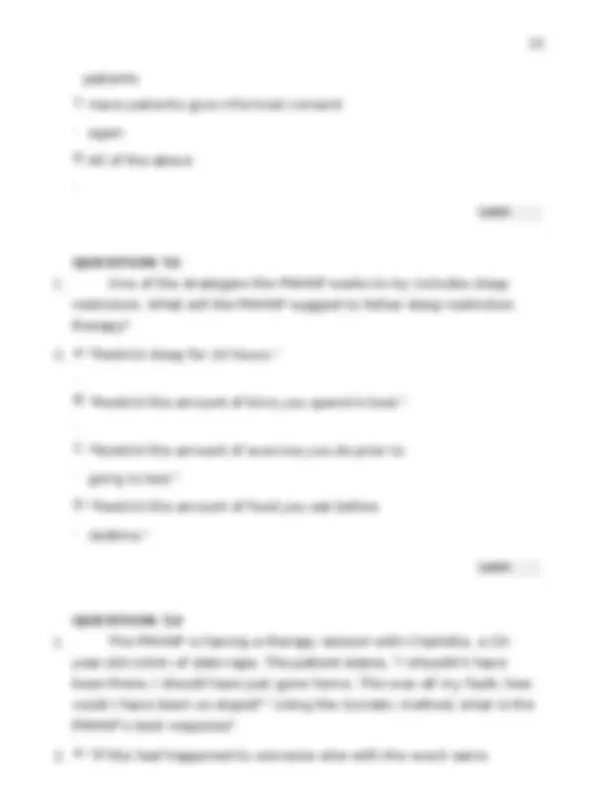
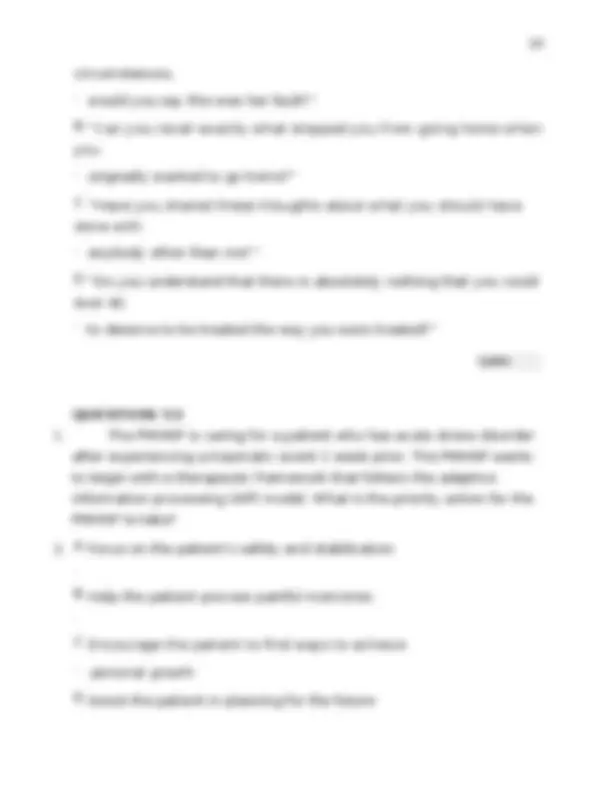
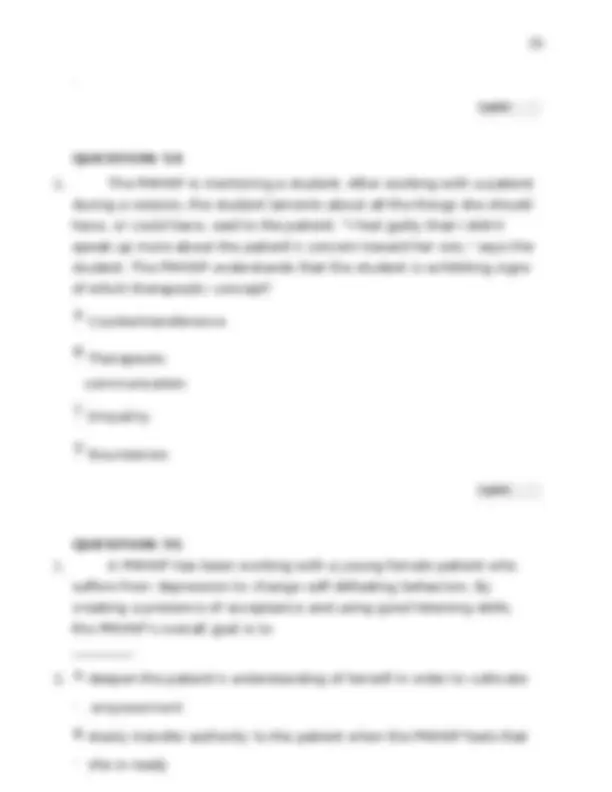
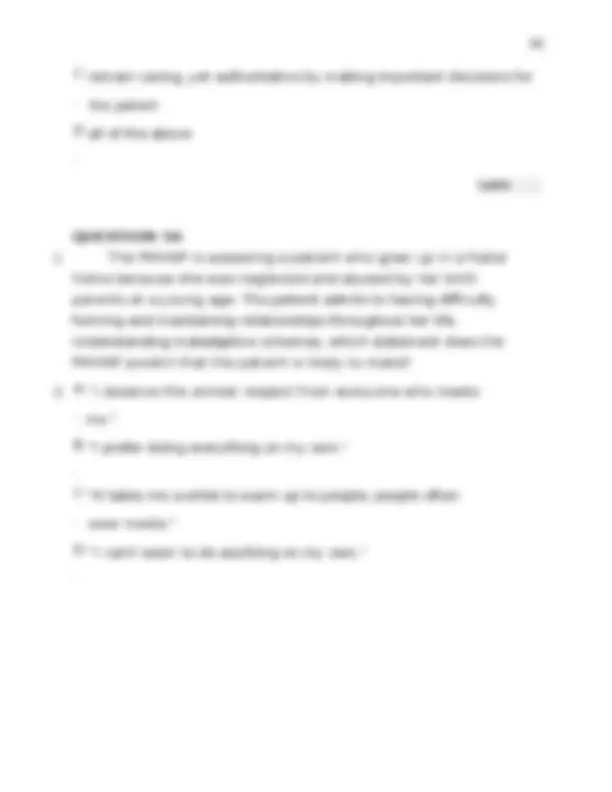
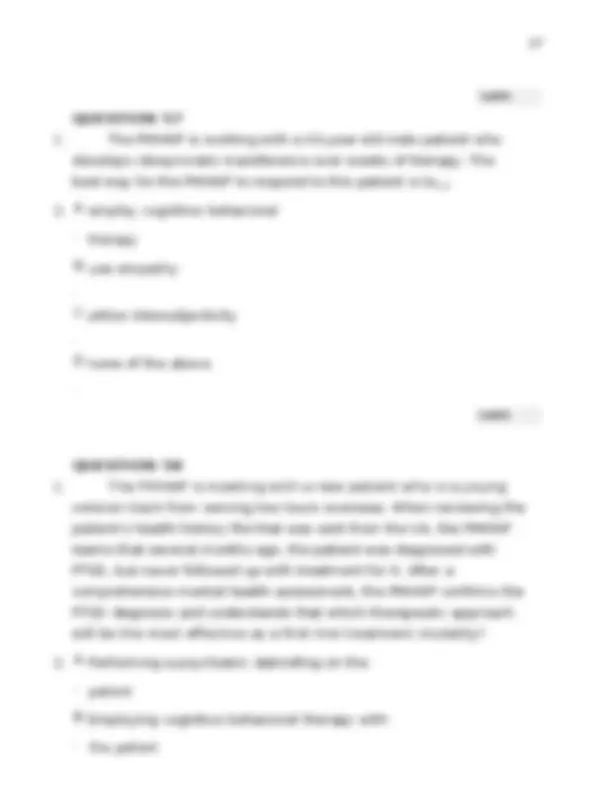
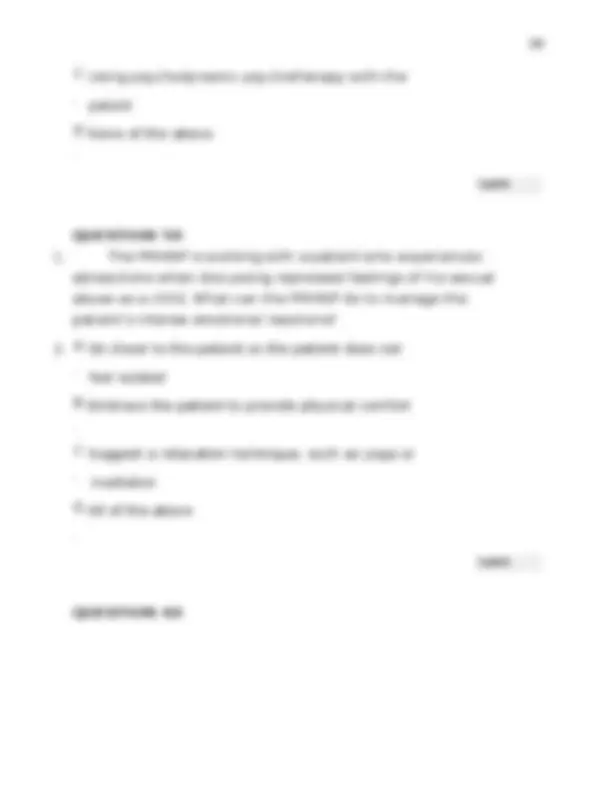
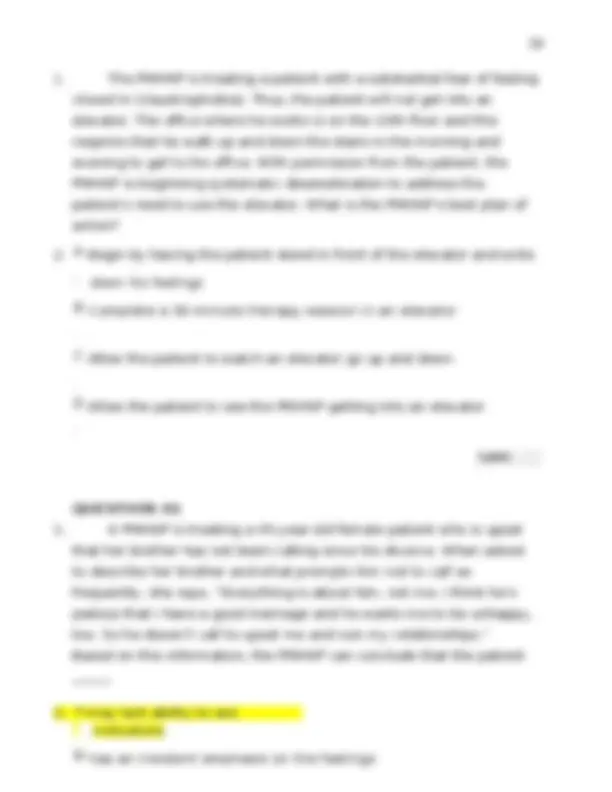
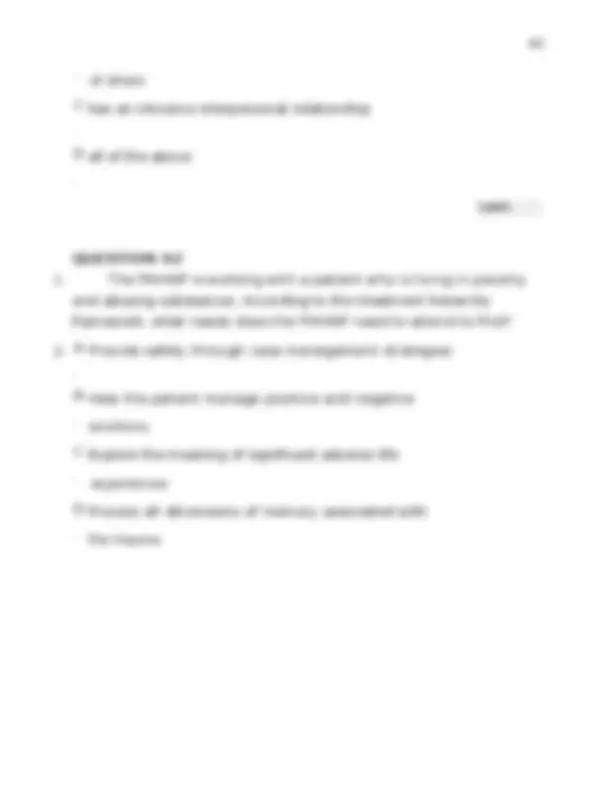
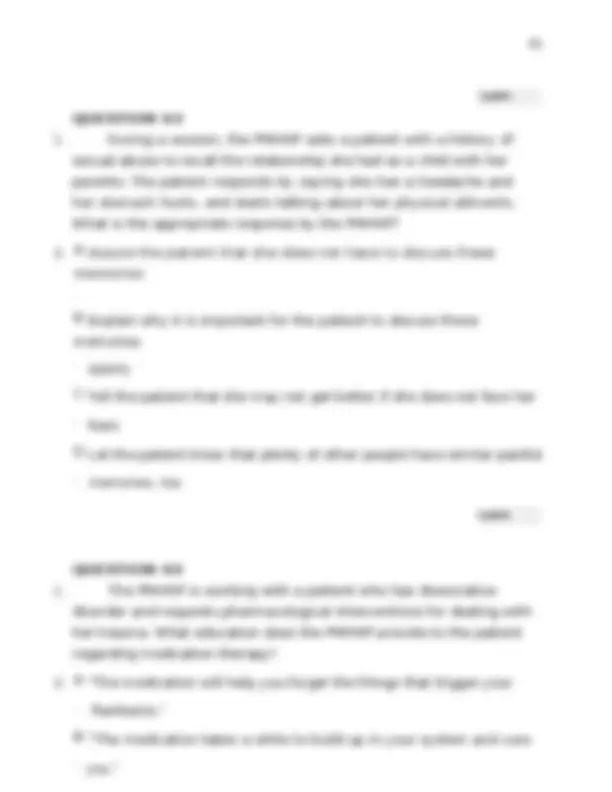
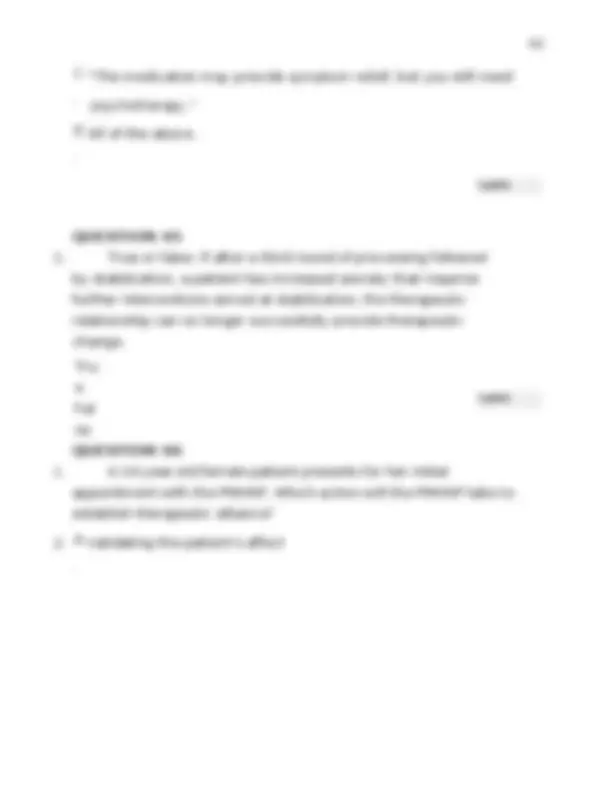
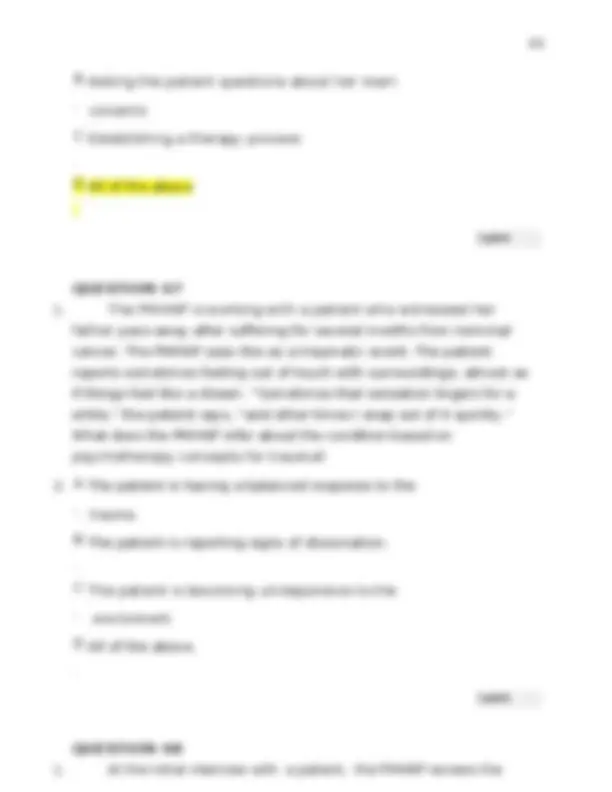
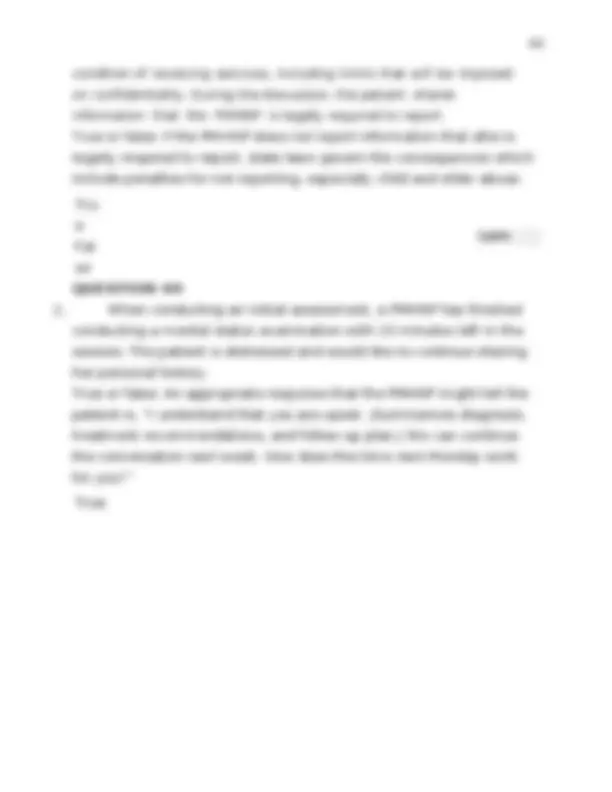
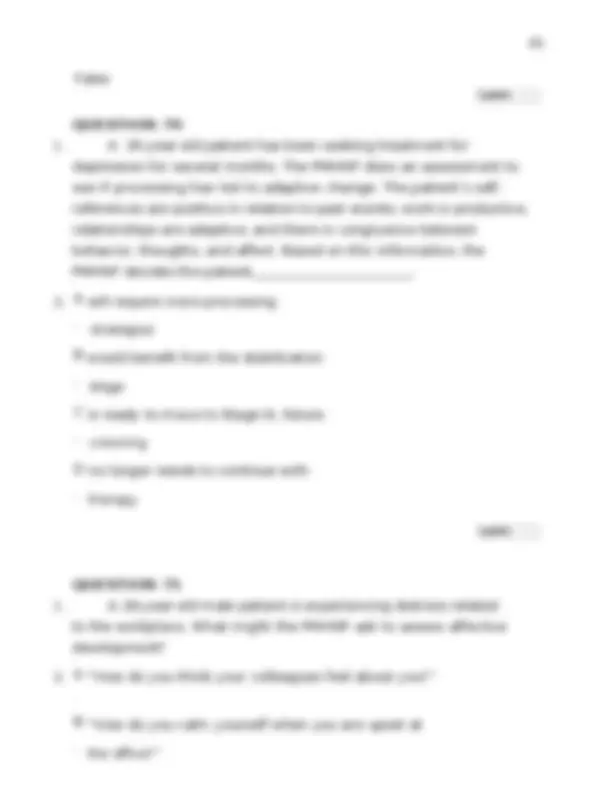
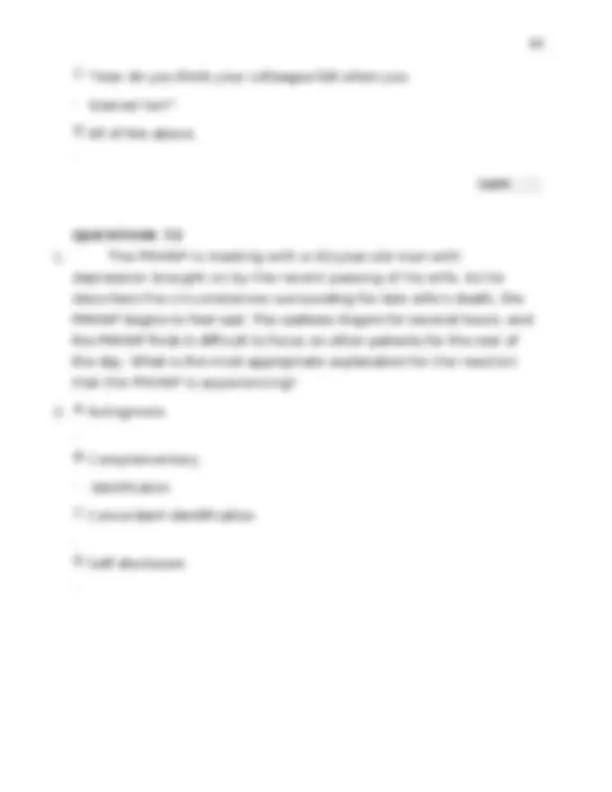
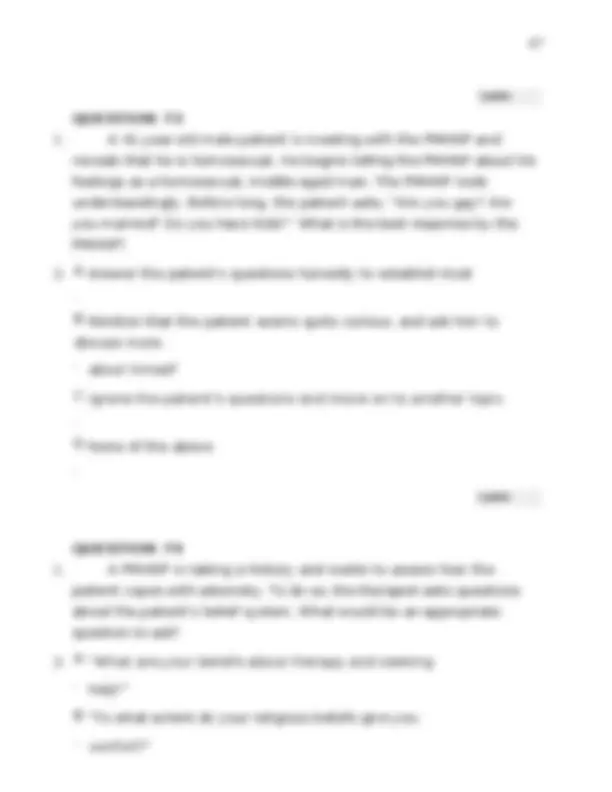
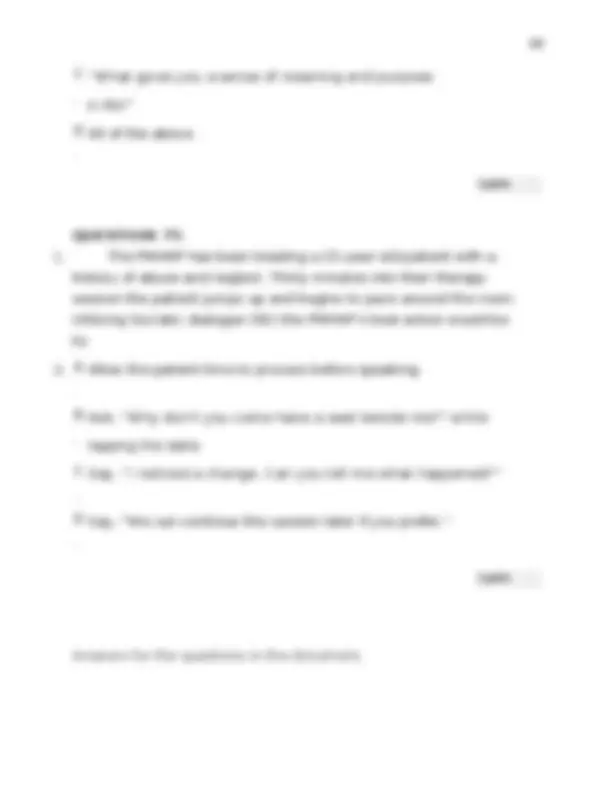





Study with the several resources on Docsity

Earn points by helping other students or get them with a premium plan


Prepare for your exams
Study with the several resources on Docsity

Earn points to download
Earn points by helping other students or get them with a premium plan
Community
Ask the community for help and clear up your study doubts
Discover the best universities in your country according to Docsity users
Free resources
Download our free guides on studying techniques, anxiety management strategies, and thesis advice from Docsity tutors
NURS 6640: MIDTERM3 EXAM WITH ANSWERS/2023.Qualified WALDEN UNIVERSITY
Typology: Exams
1 / 51

This page cannot be seen from the preview
Don't miss anything!












































A patient named Steve is seeking therapy to get help with his home situation, stating that he has been stressed since his mother-in-law moved into the house. What can the PMHNP do to assist the patient in constructing a narrative? B (^) Elicit details so Steve becomes more self-disclosing and . self-examining A new patient has been informed of the limits of confidentiality, and has signed informed consent forms. No consent, however, has been obtained for voluntary “Release of Information.” The patient is 20 years old and still lives at home with his parents. He is being treated for depression, which he attributes to the trouble he’s had finding employment. True or false: If the patient’s mother calls the PMHNP to check up on her son to see how he is doing, the therapist is required to protect patient confidentiality and not disclose information. True The PMHNP is caring for a patient with borderline personality disorder. Using a psychoanalytic psychotherapy approach, the PMHNP attempts to intensify the patient’s transference to enhance emotional processing by: A (^) Developing increased boundaries . B (^) Decreasing supportive 1 points 1 points
psychotherapy C (^) Scaling back contact with the patient . D (^) Increasing the number of sessions . per week True or false: A PMHNP may ask his patient to describe her relationship with her father, both as a child and now, in order to assess interpersonal style. Tru e Fal se QUESTION 1
in bed QUESTION 5
The PMHNP asks the patient to draw his family genogram as a next step to .
C (^) Identifying conflict-resolution . techniques D (^) All of the above . QUESTION 14
C (^) Brings in a colleague to help get the
. (^) patient to talk D (^) None of the above . QUESTION 17
D (^) None of the above. . QUESTION 21
the ego B (^) regulation and control of affects and . impulses C (^) defensive and interpersonal . functioning D (^) sense of reality of the world and of the . self QUESTION 23
you.” D (^) “What has your wife done to make you . believe this?” QUESTION 26
“He’ll be fine. He has mild depression.” Which of the following statement is correct related to confidentiality rights?
D (^) “I believe in systems; I have to have order and rules in my everyday life. If . a task must be completed, I will often complete it myself versus depending on someone else.” QUESTION 30
B (^) Focus on expressions of . emotion C (^) Identify patterns in . relationships D (^) All of the above . QUESTION 32